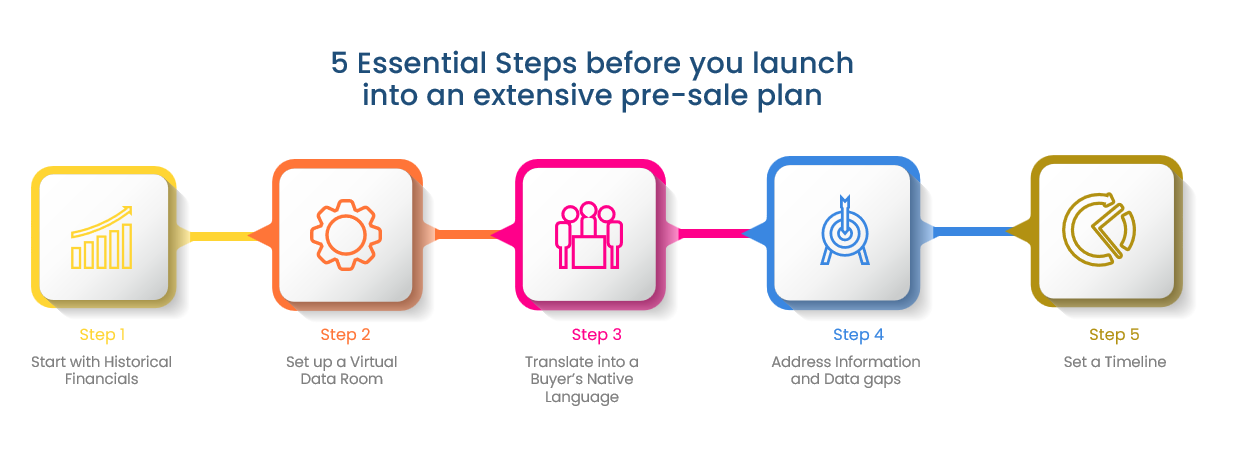
Transfer Pricing Solutions Asia
Transfer pricing is like a game of chess, where every move has a financial impact. It’s not just about strategy, but also about protecting your kingdom.
– John Smith
If you do not have the slightest clue on Transfer Pricing… You might be driving your business in a really bad direction.
The next time you’re at a gathering, and someone mentions ‘Transfer Pricing’, you might initially think it’s just accountant jargon. However, despite its possible lack of humour, its importance in business profitability and your overall earnings can’t be undermined.
What is Transfer Pricing?
Now, imagine trying to communicate a fair price for goods or services within a multinational company, where each part plays at being a separate entity. This is transfer pricing in essence. It is the pricing of transactions between related parties of products, services, or goods.
Imagine you own a conglomerate that sells widgets. Your widget factory is in Japan, the marketing department hums away in Australia, and your primary customers are nestled in the US. How do you price your widgets at each of these points, crossing two international borders in the process? Welcome to the world of transfer pricing.
New to this? Not sure if this affects you?
If you’re a multinational company, chances are it does. But worry not, we have the expert insight of Adriana Calderon, co-founder of Transfer Pricing Solutions Asia here to shine a light on this complex issue.
Picture this: You’ve decided to spread your company’s wings beyond Singapore’s borders, conducting diverse activities across different countries. Sounds exciting, doesn’t it? But, wait. This could be the prima facie trigger of transfer pricing, the economic problem lurking beneath the placid waters of global expansion. Another key trigger? If you have a structure in Singapore that swims in an industry flush with incentives, the glaring spotlight of transfer pricing is upon you.
“The difference between a regular trigger and an operational one? It’s all in the details.”
A normal trigger often lies hidden in the labyrinth of common ownership or common management, raising its head either directly or indirectly. But it’s not always that clear-cut. Take a conglomerate with family members engaged in different activities, for example. Here, figuring out the concept of control in Singapore is much like navigating a ship without a compass. That’s because there’s no rigidly set definition in Singapore. Most of the time, you’ll find the concept anchored in the term common control, e.g common control exercise via common ownership or management. So, when you see common control and transactions happening within that context, you’re looking right at the scope of transfer pricing.
When it comes to operational implementation, don’t be surprised by the boatload of questions that crop up. Maybe you’ve just expanded and decided to centralize a function overseas. There are questions like, how often should we bill? What’s a foolproof methodology and SOP we can follow year after year to implement this transaction correctly?
“Unless you have an in-house transfer pricing oracle, frequency at which you have to outsource will be high because let’s face it, few have this expertise. If you’re a newbie, we’re here to hold your hand while if you have some expertise, we’re here to give reassurance.”
Then comes the compliance side. Well, we’re here to bring that refreshing breeze of relief. Our way of testing whether your transaction was implemented correctly during the year and whether the system you used was up to snuff is a task we pick up willingly. And it’s not a one-time affair. It has to be done every year because let’s face it, tax returns are prepared every year and they need to know what’s happening.
Why is transfer pricing so crucial?
You might think, “It’s my company, why does it matter how I price goods internally?” Great question! Governments around the world are interested too, but not because they want to meddle in your business strategies. It’s a matter of taxes. Cross-border transactions within a company are subject to Multiple Tax Jurisdictions. These transactions affect how much tax revenue each government can claim.
Transfer pricing, originating as a discipline within international tax, is a regulatory framework designed to address the manipulation of profits between high-tax and low-tax countries. Serving as a set of rules, its primary purpose is to curb artificial profit shifting.
This mechanism becomes crucial in regulating such profit movements, preventing businesses from exploiting tax differentials between nations. Initially integrated into international tax protocols, transfer pricing’s significance arises from its implications in cross-border activities, where any transfer pricing decisions impact at least two countries. Thus, it evolved as a fundamental tool within the international tax landscape, aiming to foster fair and equitable financial practices across borders.
– Adriana Calderon, co-founder of Transfer Pricing Solutions
So, transfer pricing when played right, can be a clever strategy to execute a good tax planning strategy that can help with reduction of effective tax rates. But play it wrongly, and you could end up in the maws of a tax dispute. Certainly not a place you want to be!
Transfer Pricing in Singapore’s context
Ever heard of the phrase, “Just because you’re not a big fish, doesn’t mean you’re off the hook?” Yeah, it applies here. Let’s say your company has just hit the 10 million mark in revenue- a feat worth celebrating, right? First of all, kudos to you. But hold that bottle of champagne. Here’s where Transfer Pricing comes into play.
“There are two intricacies at play here: Regardless of your revenue figures, two obligations in transfer pricing exist – the obligation of documentation and the need to comply with the arm’s length principle.”
Here, if your company’s revenue hits more than 10 million dollars, rolling out mandatory Transfer Pricing documentation is a must. But what if you’re sailing below this mark?
Even if you’re operating below the 10 million mark, you’re not entirely free from Transfer Pricing obligations. Inland Revenue Authority of Singapore (IRAS), still has the right to put you under the audit microscope if they perceive potential issues in your pricing mechanisms. So the threshold just exempts you from mandatory comprehensive Transfer Pricing documentations- it doesn’t put you in a Transfer Pricing-free paradise.
While comprehensive documentation might not be required, it’s essential to demonstrate your commitment to practicing at arm’s length. You need to justify your prices and show that they resonate with market standards. In essence, you’re not required to churn out a thesis; you just need to show you’re playing fair and square.
So, even if you’ve got a revenue figure less than 10 million, pressing the pause button on Transfer Pricing considerations wouldn’t be such a wise move. Prudent practice would be to have a concrete Transfer Pricing contract or policy in place to secure your interests, just to be on the safe side. After all, prevention is better than cure, right?
Is domestic Transfer Pricing the same?
Have you considered how the region’s domestic transfer pricing can impact your bottom line? It’s all down to two words: tax leakages. Go on, conjure up the image of tax revenues quietly slipping away. This precarious scenario can occur on an international scale, where profits are stealthily shifted from high-tax regions to low-tax havens, reducing your tax bill. A case of outsmarting the system? Perhaps. But know this, it could also happen right here at home – in sunny Singapore.
In our little red dot, abundant incentives may influence the tax you pay, creating discrepancies between incentivised and non-incentivised entities. The former taxed at 0%, the latter at 17%. Quite the disparity, don’t you think? Within this context, it’s not impossible for two entities to fall into distinct classifications in the eyes of the IRAS. After all, it’s in IRAS’ best interest to keep everything at arm’s length. Hence, transfer pricing is a big deal here, applying to both cross-border and domestic transactions.
The high stakes of Transfer Pricing miscalculations
You’re probably thinking: so what if transfer pricing isn’t quite on the mark? What’s the worst that could happen during an audit?
The truth is, a lot can go wrong. For starters, tax authorities can step in and demand that you revise your prices, known as a transfer pricing adjustment. The adjustment falls under the taxation umbrella because it’s sure to hike up your tax bill. But here’s the kicker – a transfer pricing adjustment isn’t just a minor tax hiccup, it’s a full-blown case of tax indigestion.
Let’s say you’ve to amend your prior year’s tax return due to the adjustment. Unfortunately, your corresponding entity in another country can’t mirror this amendment. Hence, it results in an inevitable tax leakage exposure. This is akin to a non-recoverable sunk cost, weighing heavily on your organization’s financial health.
Penalties: No small change!
Then there’s our old nemesis: penalties. Brace yourself for a potential 5% charge on every transfer pricing adjustment. Non-compliance each year you neglect to prepare your transfer pricing documentation? That attracts another penalty. Non-compliance penalties, as it turns out, are Singapore’s unique gift to the taxation world. And what a ‘gift’ it is, right? It’s a stark reminder that playing fast and loose with your transfer pricing can earn you heavy fines and severe penalties. Stay compliant, my friends.
While most other regions may not enforce non-compliance penalties, don’t breathe that sigh of relief just yet. These regions can go for the jugular with significantly higher surcharges for transfer pricing adjustments.
So, to sum it up, the adjustment cost, the heavy penalties, and non-compliance fees can run into millions, coupled with surcharges. And remember, the unwelcome surprise of the sunk cost in the corresponding country, from which there’s no coming back. The stakes are high and the costs exorbitant – an avoidable predicament with accurate transfer pricing.
Common challenges with Transfer Pricing
There’s nothing more intimidating than confronting transfer pricing – it lurks in the shadows of multinational companies, endlessly complex and intricately linked to the worldwide financial chessboard where companies slide their pawns. But guess what?
Here are a few common problems that perplex many business gurus:
- Procrastination: While “better late than never” might work for most things, it certainly doesn’t fly with transfer pricing. Imagine taking a snowball, tossing it down a slope, and only trying to stop it after it’s rolled for three-quarters of the distance. Its size? Monstrous. The mess? Unthinkable. Well, that’s transfer pricing for you if you leave it unattended for too long.
- Short-Term Vision: Addressing problems only for the current year is akin to treating a cough while ignoring the underlying flu. If there’s an issue, it generally implies that there are also inaccuracies crawling in your previous years’ records.
- Underestimating Complexity: Changing the price strategies in transfer pricing isn’t like switching your morning latte to an espresso shot. It’s a tangled web of functionality, comparability, and economic conditions, all dancing in a complex tango. It’s high time people recognize that!
So, do these challenges strike a familiar chord?
What does everyone need to know?
When unravelling the intricacies of transfer pricing, what you really need to know is this: It’s not just about compliance and documents. Sure, checking off the legal boxes is important – nobody wants to dance with the tax authorities without the right paperwork, right?
“Transfer pricing is also about operational congruence. It’s the fine act of aligning the stars of finance, accounting, and tax, all dancing harmoniously to create a company’s inter-company transactions. Sounds a bit more complex than shuffling paperwork now, doesn’t it?”
The operational side of transfer pricing tends to play second fiddle in most people’s minds to compliance but try not to be lulled into this lopsided way of thinking. It’s about ensuring that the process and implementation occur correctly because, trust me on this, you don’t want to mess up your inter-company transactions.
“Transfer pricing necessitates your financial transactions to be correctly executed, not just from a compliance point of view but also from an operational, financial, and accounting standpoint.”
Easier said than done, right? But fret not, as long as you’re set on aligning tax, finance, and accounting in your company’s inter-company transactions, you’re well on your way to mastering the art of transfer pricing!
Final advice for businesses and individuals
Taking a pill may not be something you look forward to, but it’s still better than allowing a fever to escalate into something worse, isn’t it? Similarly, tackling transfer pricing head-on can feel overwhelming, but trust me, avoiding it can lead to future problems that are far more serious.
“Do not bury your head in the sand. Material transactions don’t just disappear because you try to ignore them. Instead, face the issue, roll up your sleeves, and dig into what needs to be done. Remember, action always beats inaction.”
Now, on a brighter note – a properly conducted Transfer Pricing study is not just about mitigating risks, it can also usher in an era of tax efficiencies and planning opportunities. The car engine doesn’t rumble just to stay in place, it’s there to take you places, isn’t it? Same applies to transfer pricing.
It’s important to understand that the goal isn’t to reduce your effective tax rate to zero. A well-executed study will help you respect the rules and maintain substance (the cake beneath the icing), while identifying areas to optimize how much you pay.
Cloaking yourself in the right armour of transfer pricing, combined with robust tax planning, can make your business more resilient and profitable. Tax planning and transfer pricing are not separate chapters in the book of financial growth; they are intertwined, and when done correctly, can lead to impressive results.



